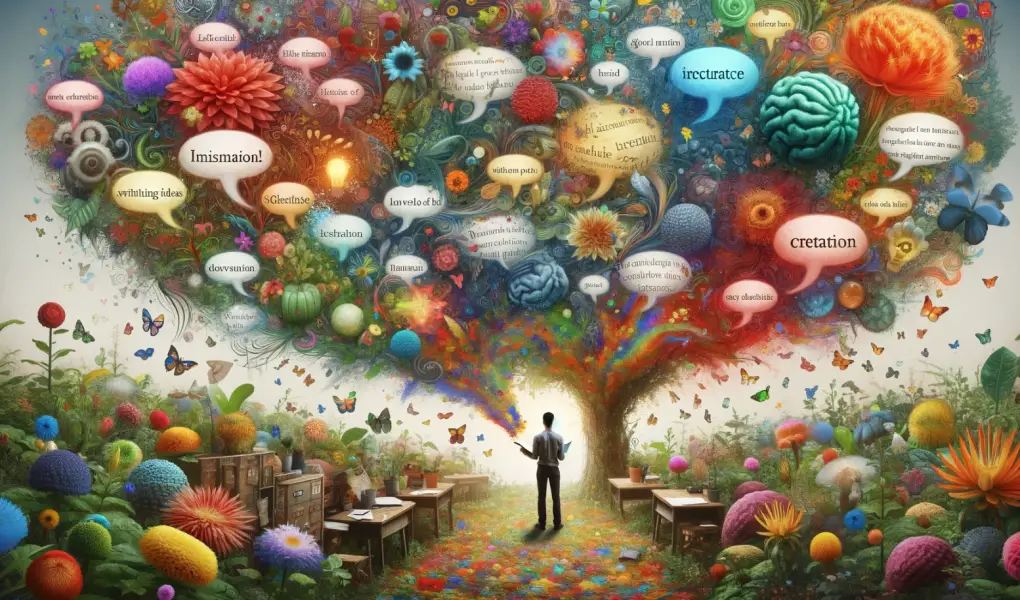Today, we’re diving into the wonderful world of creative writing with a little help from our friend, ChatGPT.
If you’ve ever found yourself staring at a blank page, wrestling with writer’s block, or just in need of a creative kickstart, you’re in the right place.
In this post, we’ll check out 10 ChatGPT prompts designed to ignite your imagination, fuel your creativity, and get those creative juices flowing like a literary Niagara Falls.
But before we embark on this creative journey, let’s take a moment to appreciate the magic of ChatGPT.
The Magic of ChatGPT
ChatGPT is like having a virtual muse at your fingertips. It’s an AI language model developed by OpenAI that can generate human-like text based on the prompts you give it.
Whether you’re a seasoned writer looking for fresh ideas or a newbie trying to find your writing voice, ChatGPT can be your secret weapon.
Now, let’s dive into the fun part – the prompts!
Prompt 1: “Imagine a World Without Gravity”
Ah, gravity, the invisible force that keeps us grounded.
But what if it disappeared one day?
How would life on Earth change?
Scenario Setting:
In this prompt, you are tasked with envisioning a world where gravity, the force that keeps us grounded on Earth, simply doesn’t exist. It’s like science fiction meeting the laws of physics. Here are some key elements to consider when creating this world:
- Physical Laws: Start by thinking about how the absence of gravity would impact the fundamental laws of physics. How do objects behave differently without gravitational forces? How do they move, interact, and coexist?
- Geography: Describe the landscape of this gravity-less world. Are there floating islands in the sky, massive cliffs where people can jump and float away, or unique geographical formations that are impossible on Earth due to gravity?
- Architecture: Consider how buildings and structures would need to be designed in a world without gravity. Are there towering skyscrapers reaching into the sky, tethered to the ground by strong cables? Or perhaps cities that float freely in the atmosphere?
Everyday Life:
Now, let’s think about how the absence of gravity would affect daily life and activities:
- Transportation: How do people move around in this world? Do they use anti-gravity vehicles, personal jetpacks, or even tamed creatures that can navigate the skies?
- Sports and Recreation: Think about the unique sports and recreational activities that might exist. Weightless soccer in the sky, flying races, or underwater-like games played in the air could be some exciting possibilities.
- Challenges and Adjustments: Explore the challenges people face in a gravity-less world. Eating, sleeping, and even basic tasks like writing could be significantly different. Describe the adaptations and inventions that have arisen to cope with these challenges.
Societal and Psychological Impacts:
The absence of gravity would not only affect the physical aspects of life but also the societal and psychological aspects:
- Social Structures: Consider how society is organized. Are there floating cities where the wealthy live above the clouds, while others dwell on the ground? What are the class and economic dynamics in this world?
- Human Evolution: How has the lack of gravity over generations shaped the physiology and evolution of the inhabitants? Are there differences in how people look or function compared to humans on Earth?
- Exploration and Curiosity: In a world without gravity, space exploration might take on a completely different form. Space travel could be more accessible, and people might have a natural curiosity for exploring the cosmos.
Storytelling Opportunities:
Now that you’ve built the foundation for your gravity-less world, think about the storytelling opportunities:
- Characters: Create characters who live in this world. What are their dreams, aspirations, and challenges? How do they adapt to this unique environment?
- Conflict and Plot: Develop a compelling plot that revolves around the challenges or adventures your characters face. Whether it’s a quest to discover the secrets of gravity or a love story set against the backdrop of a floating city, there are countless possibilities.
- Themes: Consider the themes you want to explore. Is it a story about freedom, the human spirit, or the consequences of tampering with natural laws?
Remember that the beauty of creative writing lies in your ability to let your imagination run wild.
With this prompt, you have the opportunity to craft a world that defies the laws of physics and invites readers to embark on a unique and imaginative journey.
Prompt 2: “Write a Letter to Your Future Self”
This is a powerful exercise in self-reflection and a creative way to explore your hopes, dreams, and aspirations. This prompt encourages you to write a letter addressed to your future self, imagining where you’ll be at a specific point in time and what advice, encouragement, or reminders you’d like to give to that future version of yourself.
Here’s a more detailed breakdown of how you can approach this prompt:
Choose a Future Date:
First, decide on a specific future date or milestone for your letter. It could be:
- One Year from Now: A letter to your future self in one year can reflect short-term goals, personal growth, and aspirations you hope to achieve within that time frame.
- Five Years from Now: This allows you to project further into the future and contemplate both short-term and long-term goals, career aspirations, and life changes.
- Ten Years from Now: Writing a letter to your future self a decade ahead encourages you to think about significant life changes, personal growth, and the kind of person you hope to become.
Self-Reflection:
Before you start writing, take some time for self-reflection. Think about your current goals, challenges, and what you want to achieve by the chosen future date. Consider the following points:
- Personal Growth: Reflect on your personal development journey. What skills or qualities do you want to cultivate? What habits or behaviors would you like to change or improve?
- Career Aspirations: If applicable, consider your career path. Where do you hope to be professionally in the future? What steps do you need to take to achieve those goals?
- Relationships: Think about your relationships with family, friends, or significant others. Are there specific goals or improvements you want to make in these areas?
- Passions and Interests: What hobbies, interests, or passions do you want to explore or prioritize in your future life?
Writing the Letter:
Now, it’s time to start writing your letter. Here’s a suggested structure:
- Salutation: Begin with a friendly salutation, addressing your future self warmly. For example, “Dear Future Me,” or something more personal if you prefer.
- Introduction: In the opening paragraph, set the stage by mentioning the date you’re writing the letter and the date it’s meant to be read. Express your current feelings and state of mind.
- Reflection: Share your reflections on your current situation. Talk about your goals, dreams, and the progress you’ve made so far. Acknowledge any challenges or setbacks you’ve faced.
- Aspirations: Outline your hopes and aspirations for the future. Describe the person you aim to become, the accomplishments you wish to achieve, and the experiences you want to have.
- Advice and Encouragement: Offer advice, encouragement, or reminders to your future self. What lessons have you learned that you want to pass on? What positive affirmations can you offer to boost your future self’s confidence and motivation?
- Closing: Conclude your letter with warm regards, express your love or appreciation for yourself, and sign it with your current name.
Storing the Letter:
After writing your letter, decide how you want to store it for the future. Some options include:
- Digital Storage: Save the letter as a digital document on your computer or in the cloud, and set a calendar reminder for the chosen future date to retrieve and read it.
- Physical Copy: Print the letter and place it in a sealed envelope. Store it in a safe place or give it to a trusted friend or family member for safekeeping until the designated date.
Future Reading:
When the future date arrives, retrieve your letter and read it. Take note of how your life has evolved and how your aspirations and advice from the past resonate with your current self. This can be a deeply reflective and inspiring experience, helping you track your personal growth and staying connected to your goals.




